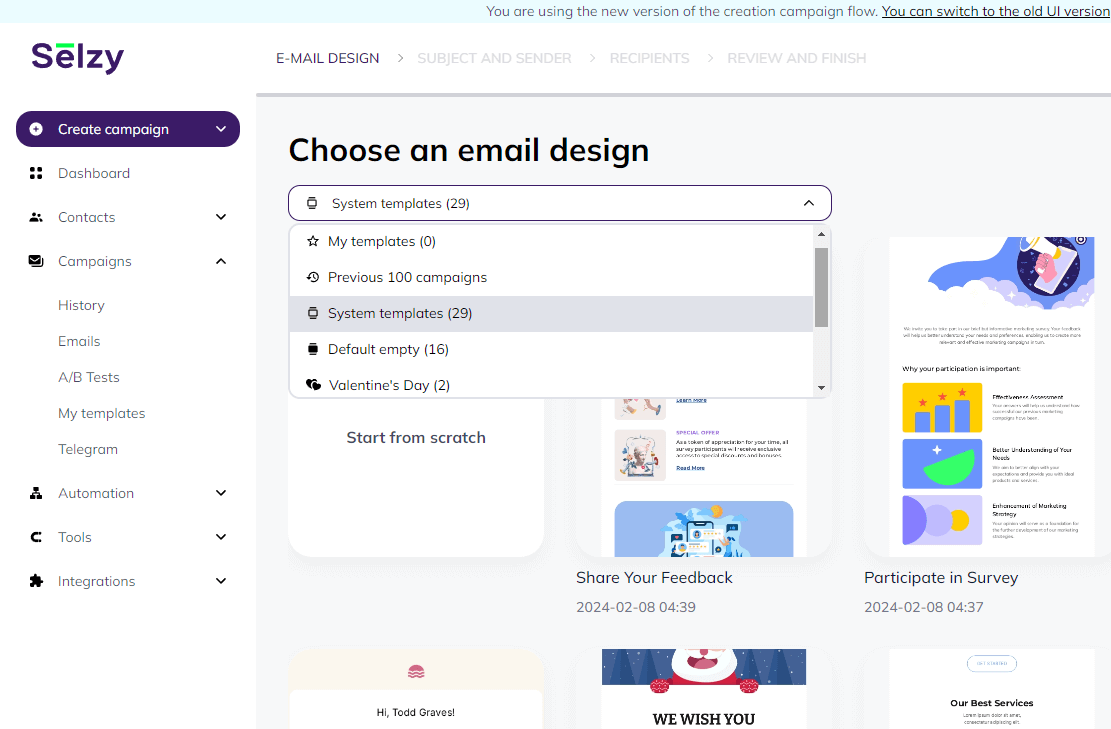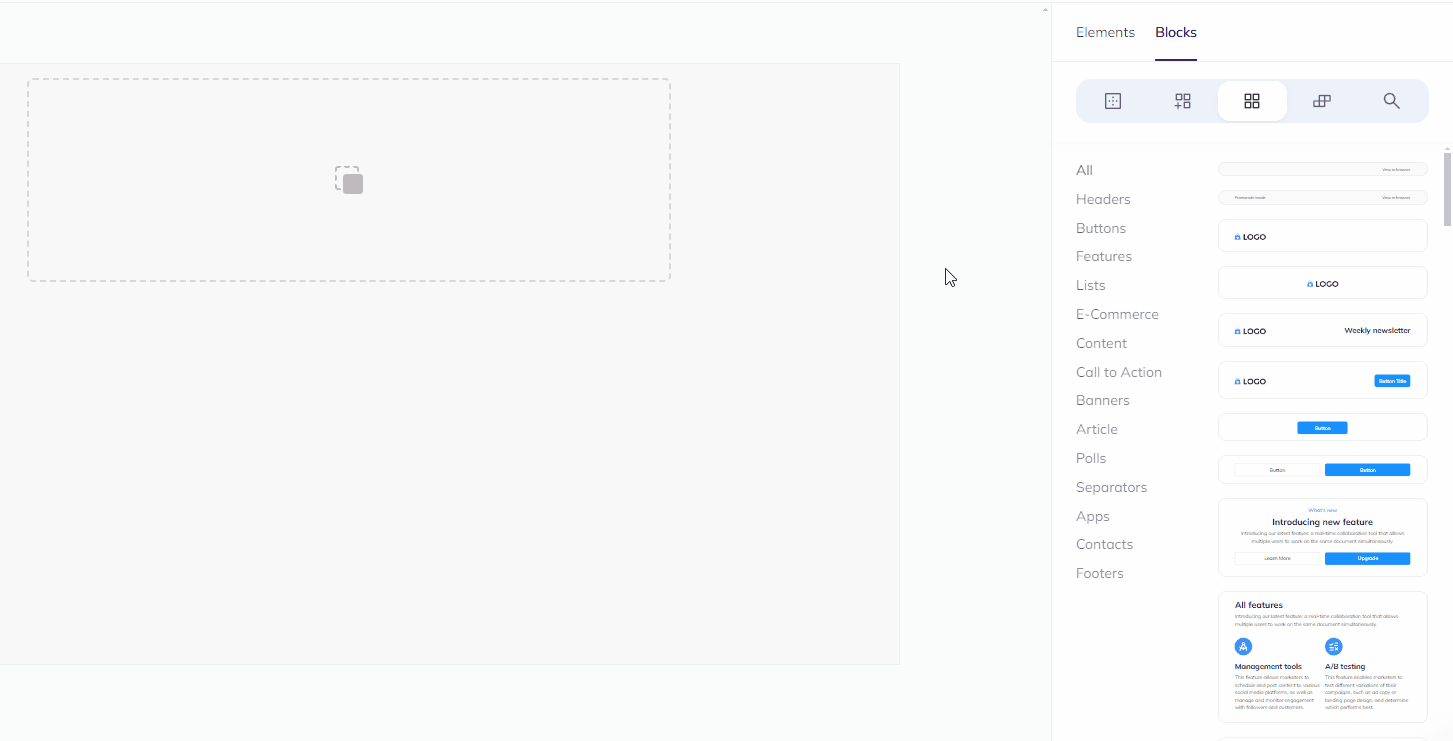We’re into email marketing for a number of reasons. It is a great tool for achieving goals, it’s relatively inexpensive to start and maintain — which is great for small businesses — and it’s an effective way for communicating with your clients.
But you can only achieve those goals when you have a clear roadmap. That’s what strategies are for — they show you where you need to go and how to get there. In this article, we’ll talk about email marketing strategies in particular. Let’s dive in.
Does email marketing still work in 2024?
The short answer is — yes, it does. Just look at the numbers:
- Nearly 4.5 billion people use email — and that number is growing.
- A marketing email has an average return rate of $36 for every $1 spent.
- By 2026, over 392.5 billion emails are projected to be sent every day.
- 41% of marketers say that email is their most effective marketing channel

In fact, email marketing has become even more valuable as a business in recent years. Experts say that it’s because of the pandemic and the way more people started to make business exchanges online while staying at home.
Then why do we keep hearing that email marketing is a thing of the past? That’s just it, email marketing dates back, that’s why you can regularly hear this question: people ask it about anything that is old enough. In reality, though, email marketing hasn’t gone anywhere and it’s as solid as it has always been. From the first time your customer interacts with your business to the day they reach the final stage of the customer journey — email marketing is everywhere. And it’s versatile too: the purpose of your emails can range from getting people to tell you more about themselves to getting sales.
Here’s how many types of emails there out there:

Why use email marketing strategy
For starters, you don’t necessarily need a strategy for emails. If you’re launching a single newsletter as a hobby, a strategy might be too much for you at the moment. But if you have a complex and long project before you or you want to get results out of your hobby newsletter (even if it’s just growing the number of subscribers), there is no way you can do it without a strategy. A strategy is your guide that you need to avoid getting lost.
It also helps you do several pretty amazing things that would be difficult without it:
Lead nurturing
You need a strategy to BUILD a relationship with your customers. Step after step, email marketing can help you guide them through every stage of the buying cycle, making the process smooth and natural.
It shortens the buying cycle. If you’re selling complex and/or expensive products, it takes your potential customers much longer to make a purchasing decision. Emails help to gradually acquaint them with the idea of owning those products. Send guides, checklists, and how-tos to show the benefits — and they won’t resist the temptation.
It automates routine tasks. Set sequences of triggered emails and transactional emails. With their help, you can automatically send emails in response to your customers’ actions, while you focus on more important tasks.
Revenue generation
This is probably the main goal of every marketer. To achieve it directly, inform subscribers about upcoming sales and discount deals, and provide them with personalized offers.
Indirectly, anything that makes one email campaign differ from another can increase your revenue. For example, you can use email automation to save time and effort while driving profit at the same time. According to research, the welcome email open rate is 50% or higher, which makes them 86% more effective than standard newsletters, and abandoned cart emails generate up to 49% more first-time purchases than other email types. Other email features that can improve your campaign results include segmentation and personalization.
That said, 72% of marketers surveyed by Litmus said they weren’t actually sure what their exact email marketing ROI is. But that doesn’t mean email campaigns have become less effective in driving revenue. What it does mean is that the main strengths of email marketing lie not in increasing profit directly, but in achieving it more subtly through building long-term relationships with the customers.
Traffic generation
While making profit is certainly the ultimate goal of any email marketing strategy, it should never be your only one. If your email marketing gets too aggressive, it’ll scare prospects away and make them hit the unsubscribe button. To avoid it, offer them valuable information in your emails and send them to your website with your CTAs, getting backlinks and increasing traffic.
With captivating subject lines and compelling CTAs, you can capture the attention of your subscribers and promote pages on your website that don’t receive enough traffic. Your subscribers will get something more than just emails — you’ll get the much-wanted traffic.
Brand awareness
Usually, companies maintain a single visual style in all their marketing materials: the same colors, fonts, logos, tone of voice. Emails are another asset to support your brand identity.
Email marketing is a great opportunity to remind customers about your brand. The more often they see your company emails in their inbox, the more likely they are to choose you when searching for a product or service. The email from Starbucks shown below is a great example of leveraging email marketing for that purpose.

How to develop an email marketing strategy
Now it’s time for a step-by-step guide on how and where to collect contacts, what and how often to send and how to design your emails. Let’s dig in.
-
Identify your goals
Before anything else, clearly define the goals and work out the metrics that you’ll use to determine the success or failure of each step. Every next move depends on the goals because if you send emails without a clear purpose and system, they are unlikely to bring any significant result.
The set of goals depends on the specifics of your project, but it’s important that these goals are specific, measurable, and few in number. They might look like this:
- Grow the email list
- Increase email-generated website traffic
- Get more leads from emails
- Increase the number of completed targeted actions
- Boost income from targeted actions
Take your list of goals and adjust your actions accordingly. For example, if you want to increase the number of subscribers, concentrate on the numbers of delivered and opened emails (though after the 2021 iOS update, you need to take the open rate with a pinch of salt). If you want to increase sales, analyze the visitors to your website and their behavior and transactions.
To measure the results of your actions toward your goals, use email analytics and track the corresponding email metrics such as delivery and open rates, click-through rates, and conversions. Sometimes, you’ll also need data from website analytics tools to count the metrics.
Ideally, you should have clearly stated goals in the form of “increase sales by 30% in 6 months.” For benchmarks, use the numbers from your current mailings (if you have any), competitor data, average market benchmarks.
When developing an email marketing strategy from scratch, it’s hard to get exact numbers from the get-go, so it’s OK for the first goals to be approximate. Adjust them during the implementation and testing. The vector is what matters.
-
Analyze your competitors
Once you have your goals and metrics defined, you’ll need something to start with — actual ideas for templates, copies, email sequences, etc. The most effective method is to perform a competitive analysis: just subscribe to some of your competitors’ newsletters and analyze their email marketing activities. Create a document or a spreadsheet and make notes of what types of emails each of them sends, when and how often, what content they use, how they build their lists, etc.
You may also include the following:
- Examples of headlines, descriptions and CTAs
- What happens after a successful subscription confirmation
- Design ideas
- Email marketing tools
- Data privacy protection measures

To get an understanding of your competitors’ strategies, you need to subscribe long (about a couple of months at the least) before you launch your own campaigns.
-
Determine your target audience
Create marketing personas for your subscribers: who they are, what they like and what they need. Information about the pain points of your clients will help you determine the form and frequency of your email campaigns.
What else a subscriber persona can consist of:
- Gender
- Age
- Location
- Occupation and position
- Hobbies
- Any of the points specific to your business (for example, if you’re in the educational business, it’s the information on what kind of courses they like and need).
Don’t get carried away. Collect only the information you need to make a decision. If your business has nothing to do with your subscribers’ marital status, there’s no point in describing whether they are married or single in their personas’ profiles.
There are many options for collecting this information:
- Use Google Analytics to find out about the search queries and interests of your customers.
- Examine your subscribers’ profiles in social networks.
- Conduct in-depth interviews with some of the current clients.
- Obtain industry research and insights.
- Add surveys and polls in your existing email campaigns.
Here’s a great example of an email containing a feedback request:

Also, you can embed a survey, poll, or quiz in your emails so that your subscribers won’t have to leave their inbox to participate and send the results.
-
Identify the appropriate list-building tactics and plan re-engagement campaigns
A healthy list of contacts is the foundation for the success of all your email marketing efforts. Emails sent to low-quality lists end up in spam, flagging a sender as a spammer and creating a bunch of problems for future campaigns. That’s why it’s never a good idea to buy email lists.
“Wholesome” email lists gathered organically, on the other hand, consist of people who gave their consent to receiving your messages and are willing to be open to your offers. It is definitely so much better than purchased lists full of junk and dead contacts.
Possible ways to build a healthy contact base include:
- Pop-up forms on your website: you can offer visitors to subscribe to your emails to receive useful content.
- Subscription forms in blogs: if you have a blog, embed a subscription form there.
- Give something valuable in exchange for a subscription: guides, discounts, cheat sheets — anything acting as a reason for them to give you their email addresses.
- Collect contacts offline: not the most popular option in recent years, but you can get email addresses during various offline meet-ups, conferences, etc.
If you’re seriously in search of list-building tactics that work, we have something for you: our epic list building guide that you can get for free 🔥 Plus, you’ll get to subscribe to our email marketing digest and get emails with links to the hottest blog articles twice a month. Hit that cute green button in our subscription form, and come on in!
If you already have a list and want to use it after a break, it’s better to reactivate it first to freshen it up.
It’s also always a good idea to regularly clean your lists up of dead and abandoned emails and from unsubscribes.
-
Optimize your emails and edit the content
This step is optional and matters only if you already have/had some email campaigns working. If you’re starting from square one, go straight to the next step.
So, if you have some email campaigns, it might be easier and faster to optimize them instead of creating templates from scratch. Study your current email marketing situation to answer the question: what do you have now and what do you need to make it work (better)?
What to evaluate:
- Where do your subscribers come from? Analyze your existing subscription forms and other ways to build a list.
- What kind of lists do you have? Find out how old they are, whether they have a lot of sleeping or dead contacts, and what characteristics you can use to segment them.
- What are the strengths/weaknesses of your emails? Look at how your emails look, what messages they convey, what design solutions work and what do not.
To make informed decisions, use the findings from the previous steps:
- After having evaluated the competitors’ emails, find their strengths and weaknesses and decide what to take for yourself, what you can do better, and what not to do under any circumstances.
- Use the information in your subscriber personas as a base for segmentation.
- Depending on the goals, make a list of possible changes. Do you need to make your CTAs clearer to get more website traffic? Does your copy sound too aggressive? Do you run re-engagement campaigns? When the answer is “yes”, take action.
-
Pick the email marketing tools
By email marketing tools we mean email marketing services (ESPs) like Selzy that come full of features to make modern email marketing easier and more convenient.
Today, there are many (very many) different email marketing platforms to choose from. Depending on the size and specifics, some of the platforms may suit your needs better than others. When making a choice, ask yourself what your long-term goals are. For example, if you’re a small business owner and all you need at the moment is a small list of people who would be interested in your handicraft, you don’t need an especially sophisticated service. On the other hand, if you have thousands of customers and want to scale your business further and/or have specific automation requirements, for instance, you might need a more robust platform.
What can impact your choice besides the type and size of your business:
- Budget
- Your (or your employees’) experience in email marketing
- Type and size of business
- Special requirements (such as the aforementioned automation, A/B testing, personalization, etc.)
- Your email marketing goals
For details on how each (and more) of these points can sway you towards one ESP or another, read our email marketing service comparison. We created it to help you to not get lost in the abundance of email marketing platforms that exist on the market.
-
Determine the email types
When developing email communications, rely on your audience data, take the best from competitors and, of course, build your own hypotheses. To explore the full potential of email marketing, send several types of emails to your subscribers. There can be different options there:
- Triggered emails like welcome messages
- Transactional emails like order confirmation emails
- Automatic email sequences like abandoned carts emails
- Bulk emails with promotions and offers
- Newsletters like blog updates
- Re-engagement emails
The more types of emails you send, the fuller your presence will be in your subscribers’ buying cycle. However, different types of emails require different templates (use the links above to get an understanding and find inspiration). You can create them from scratch or use the template library of your ESP of choice.
Selzy has several dozen of beautiful responsive templates of different varieties in the library:

To explore them and find the most suitable ones for your business, try our powerful and user-friendly email builder with new AI features such as the AI writing assistant and AI image generation. With this builder, you’ll create professional emails quickly and easily even without any coding skills — and if you do know how to code, you can also try the code mode to work with HTML. What’s more, you can try it for free..
-
Create a schedule
After you’ve determined what to send and who to, comes when — that is, the scheduling part.
You’ll need to develop a sort of content plan for the near future (for a couple of weeks/a month). There’s no strict template for how it should look, so you can do it any way you like in Google Sheets, for example. All you have to know is how many emails you need to send and when to analyze the campaign results.
The number and the frequency of emails depend on your goals. You will have to experiment in order to find a balance where the subscriber engagement remains at a good level. If your unsubscribe rate is too high, it might be a signal to reduce the frequency of your emails. And if open rates and CTR are consistently high, you may want to risk sending more content.
What matters is activity and regularity. Write regularly, but not too often. You can start with 1 email per week and work your way from there (plus triggered and transactional emails). You can also see how often competitors send their emails and use this information as a reference.
To determine the best time to send emails, take a look at our article on the matter where we’ve dug into several reliable studies including our own study of 26 billion emails to provide you with some definite information.
-
Monitor email performance
Analyzing results is a critical element of any email marketing strategy. It tells you where you are on the journey to those goals you have outlined in the beginning.
After you launch campaigns and collect the first data on your chosen metrics, you’ll see how realistic they were, and you’ll be able to adjust your KPIs. This will give you even more data on what types of emails and formats work best for your subscriber list.
What to evaluate in addition to your pre-set metrics:
- Opens
- Clicks
- Deliverability
- Unsubscribes
- Spam complaints
These are likely to be the key metrics in your email service provider so you won’t have to look far to find them.
Here’s what the campaign details look like in Selzy:

Additionally, you can use data from Google Analytics. There, you can track what subscribers do on your website and make some conclusions. You can evaluate:
- How many people go to the website from emails?
- What is the bounce rate?
- How many orders did you have coming from emails?
- What is the average order value for each subscriber?
- How much money did each email bring?
Effective email marketing strategies for better results
These were all the basics of creating and executing a successful email marketing strategy. Before we wrap up, here’s a bunch of short but sweet email marketing tips to help you get the most out of your email marketing strategy.
Segment your audience
Segmentation helps to divide your list into parts (segments), concentrate marketing efforts on the target audience, and deliver emails that matter. Each segment is a group of buyers with the same type of requests and reactions to the product. You can segment by:
- Activity
- Preference
- Life cycle
- Age and gender
- Location
This will enable you to offer laser-targeted, personalized messages to each audience group.
Personalize your messages
Having segmented your list, create personalized messages for each group.
Personalization is an approach where emails are made with the specifics of the target audience in mind. It’s a very important principle of email marketing. Without it, your mailings will likely miss the mark and look too general or worse, resemble spam messages.
It makes no sense to send exactly the same emails to your entire audience because people have different interests. Dividing users into several groups and offering useful content to each of them is a much more effective tactic. For example, if you have a cosmetics store and know the skin type your customers have, there’s no point in sending people with dry skin tips on oily skin care.
Write click-worthy subject lines
The subject line is a sort of headline, only for emails. It has the same function as a headline: it attracts the readers’ attention and tells what the whole thing is about. So you can apply the headline creation principles to your emails’ subject lines. For example, the 4U headlines technique states that four elements should be present in the title: uniqueness, usefulness, ultra-specificity and urgency.
Still, in emails, the context is slightly different because they imply a more personalized level of relationship with the reader. Read more about subject lines and tips on how to write good email subject lines that get opened.
Test the elements of your email campaigns
Sometimes small changes can be a decisive factor that affect the email marketing performance. A/B testing aka split testing is a powerful tool that helps you use solid data to tailor your campaigns to your audience’s preferences. Not sure which layout to use or which CTA will work best for a particular audience segment? Conduct an A/B test and find out.
Here’s how it works:
- Send two emails with different layouts to two groups of subscribers (10% +10%).
- Then evaluate which option won depending on your metrics (for example, which got more clicks).
- Send the winner email to the other 80% of your list.
The rule of thumb of A/B testing is to test one thing at a time and focus on the key elements at first: in the case of emails, that would be the subject line, calls to action, and images.
Automate email campaigns when possible
Email automation is one of the most popular reasons to use email service providers because it helps email marketers delegate routine tasks and free their time for other activities. For example, you can set up transactional and triggered mailings in response to certain events like order placement or newsletter subscription.
You can also set up more advanced email sequences like re-engagement campaigns or create even more sophisticated branched sequences.
Include clear calls to action
Calls to action help users to purchase, download, subscribe, sign up, and perform other target actions Your mailings’ CTR largely depends on how convincing and clear your CTAs are. There are several ways you can create effective CTAs:
- Make the call clear. Tell users what they will get and be as specific as possible.
- Talk about benefits. Emphasize the benefits of your offer.
- Offer immediate results. It’s great when users click on buttons and immediately get something useful.
- Leverage the fear of missing out. Add an element of urgency to your offer.
- Use the idea of scarcity. Introduce limited product series, short-term promotions, temporary bonuses.
Send mobile-friendly emails
When designing an email, keep in mind that mobile email clients are extremely popular as an email reading environment.
It means that you need to structure the emails in a special way:
- Place the most important elements in the center of layouts as most users scroll the page with their thumbs.
- Choose bigger fonts.
- Position the CTAs so that the user can see them without scrolling.
- Do not make emails too lengthy.
It’s good to know that in ESPs’ email builders, you can not only adapt emails for mobile but make separate mobile versions of your emails too.
Need more advice? Check out our article solely dedicated to email marketing tips to discover more ideas like these.
Email marketing strategy checklist
Let’s sum it up in the form of a checklist.
- Identify your goals
- Outline why your business needs email marketing and why it can be beneficial.
- Set specific measurable goals (at least one) and a deadline for achieving them.
- For benchmarks, use the numbers from your current mailings, competitor data, average market benchmarks.
- Make a competitor analysis
- Make a list of your competitors to find out how they conduct their email marketing.
- Subscribe to some of your competitors and analyze their email marketing activities: what types of emails do they send? When and how often? What do they write about? How do they build their lists?
- Determine your target audience
- Create subscriber personas: who they are, what they like, and what they need.
- Collect only the information that you need to make a decision.
- Identify the appropriate list-building tactics and plan re-engagement campaigns
- Don’t buy email lists.
- Study the list-building tactics and decide which ones are appropriate in your case.
- Regularly clean your lists and run re-engagement campaigns if you have an old list that you haven’t used for a long time.
- Optimize your emails and edit the content (optional)
- Answer the questions: Where do your subscribers come from? What kind of lists do you have? What are the strengths/weaknesses of your emails?
- To make informed decisions, use the findings from the previous steps.
- Pick the email marketing tools
- Ask yourself what your long-term goals are.
- Study email marketing service comparisons to make a choice.
- Determine the email types
- What types of emails do you need?
- Rely on your audience data, take the best from competitors and build your own hypotheses.
- Create a schedule
- Develop a sort of content plan for the near future.
- Write regularly, but not too often.
- Use insights from your email analytics tool to optimize your email sending cadence.
- Monitor email performance
- Gather the data and see how realistic your goals were.
- Adjust metrics and create new hypotheses.






